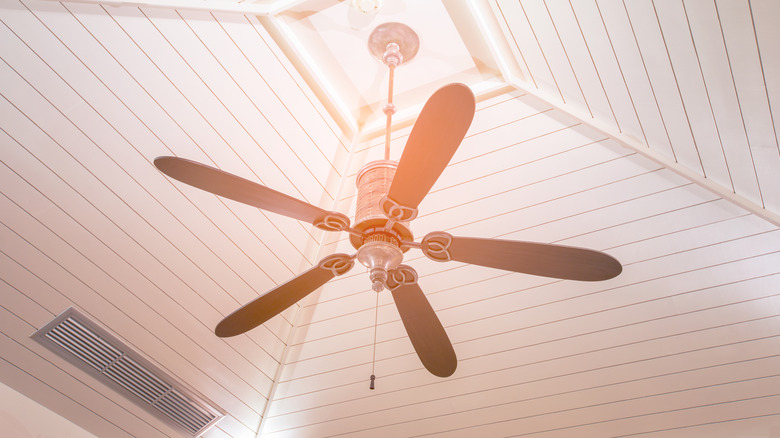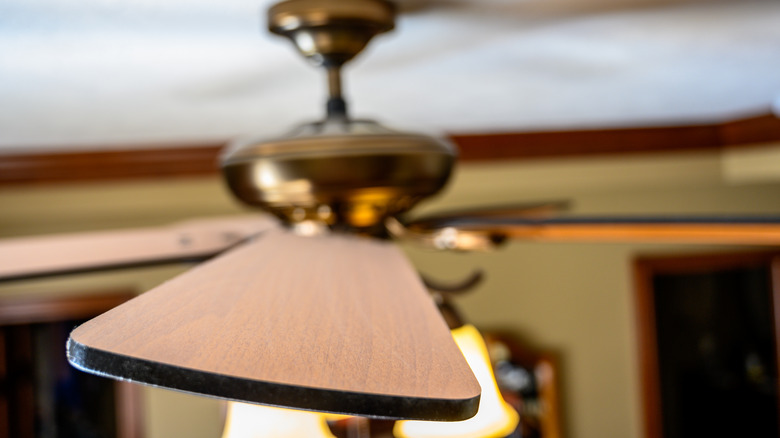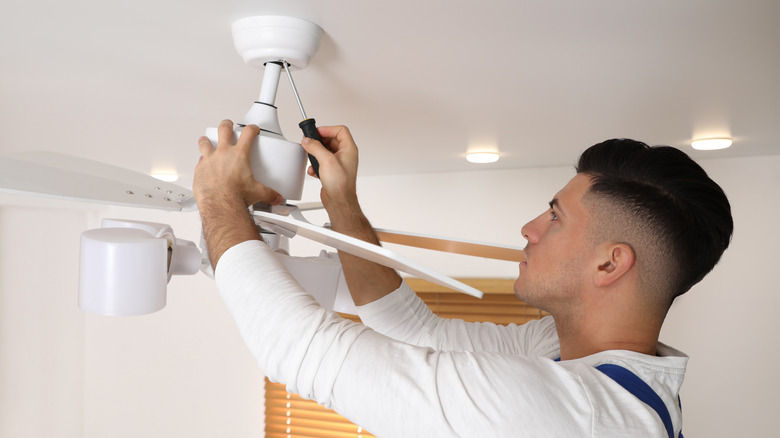The Ceiling Fan Feature You Never Knew About
There's no better way to stylishly add a cooling element to a space than with a chic ceiling fan. These lofty air-movers have been spinning their blades in the United States since the 1860s, according to Just Energy. Regulating temperatures in the home makes up for 47% of a household's energy use, therefore, improving the efficiency of our home's heating and cooling systems can have a huge effect on energy bills. Rediscovering how simple but effective appliances like the ceiling fan work is a key to finding and making the most of the little efficiencies they create.
According to USA Today, fans are the better choice over air conditioners for cooling your home in situations where it's not too hot or humid, and you can concentrate on a small area. And with the prices of energy skyrocketing, it's no surprise that more and more people are turning to the fan, rather than the air conditioner.
In addition, per The Times of India, ceiling fans have become 21st-century gadgets too, with some models sporting built-in lights, remote controls, Bluetooth connectivity, and speakers. However, what none of these features highlight is the ceiling fan's bonus B-side; the special feature that takes this icon of tropical home design and turns it into a useful option for homes around the world and throughout the year.
Ceiling fans can keep you warmer in winter
Did you know that because of the angle of the blades, you can essentially flip a ceiling fan upside down just by reversing the direction the fan spins? During what most people would call normal operation — using a ceiling fan to cool down on a hot day — the fan spins counterclockwise which forces air downwards, according to Ceiling Fans Direct. The people in the room will feel cooler as the air moves over their skin. It's this wind chill effect that we're referring to when we talk about ceiling fans cooling spaces. In reality, it is the people within those spaces that are cooled, explains Home Depot.
When set into reverse mode, the fan's function is flipped, and instead of pushing air downwards, it draws air up from below. This is crucial in winter, especially in homes with high ceilings, as heat can get trapped up at the top of the room, where it's useless for people sitting at ground level. Having the fan on reverse at a low level during the winter months can warm the whole room much more efficiently, and can lead to monetary savings if implemented correctly, according to Energy Star. In this way, ceiling fans are not only a valuable energy-saving tool in your home during the summer months but have the potential to make an impact year-round.
Ceiling fan best practices for energy efficiency
According to the U.S. Department of Energy, properly installing and running a ceiling fan can help you stay cool for less. Don't forget, these are still appliances that use power, and in order to save on your electric bill you want to maximize your efficiency. Efficiency in terms of ceiling fans means having a fan that's correctly sized and located within the space, and only running it when people are around. Remember, fans cool people, not places, so running a fan in an empty room is simply wasted energy.
The larger the room, the longer the blades need to be. To give you some idea, according to Interiors Place, a fan for a 100-square-foot room ought to have blades around 50 inches long, with the number rising and shrinking according to the size of the room. A height of around 8 feet is recommended so that the air circulation can be adequately felt. In most houses, this is ceiling height or just below it, although in houses with higher ceilings a downrod mount is used to hang the fan at an appropriate height.
Position your fan in the center of the room so that its impact can be felt throughout the space. And remember — when the house needs warming rather than cooling, reverse the direction of your ceiling fan's spin to save time heating up the room, and money too!


